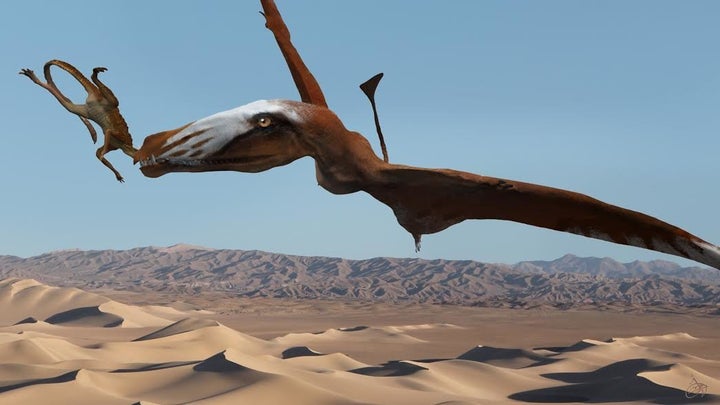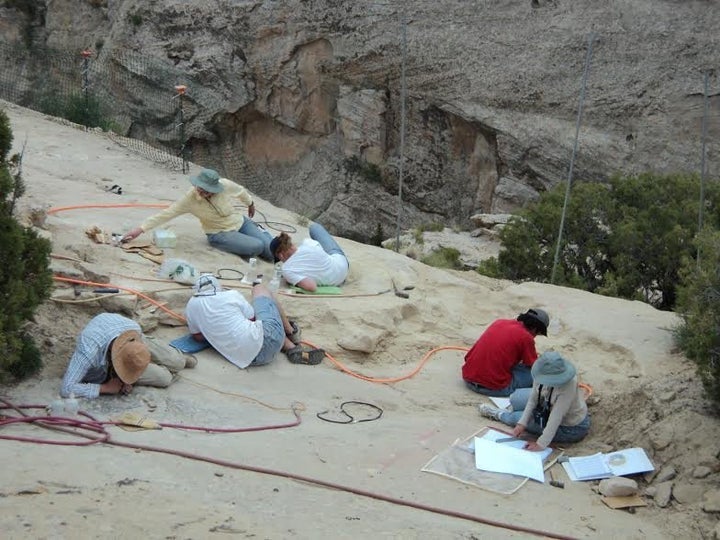
Some 210 million years ago, the area that's now the western United States was home to the largest flying reptile of the time: the terrifying pterosaur.
Paleontologists know of about 150 species of pterosaur -- now including an as-yet-unnamed one that was discovered earlier this year and revealed last week. Researchers found evidence of the previously unknown pterosaur in a treasure trove of fossils that yielded bones of seven other animals they don't think have been identified before.
The intact pterosaur bones might be the most stunning discovery at the site, which is just outside the Dinosaur National Monument in northeastern Utah. The bones fill a gap in the fossil record between earlier, smaller pterosaurs and the giant ones that came later. And thank goodness they're just bones -- you wouldn't want to meet one of these flying beasts.
"If you saw one of these things coming at you with its jaws open, it would freak you out of your mind," said Brooks Britt, a Brigham Young University paleontologist who presented preliminary findings last week at the Society of Vertebrate Paleontology conference in Dallas.
The largest known pterosaur is the Quetzalcoatlus, with a wingspan of about 30 feet and massive jaws that could crush small crocodile-type reptiles, Britt told The Huffington Post. The newly discovered species had a wingspan of about 4.5 feet and an 8-inch-long skull with small eyes, he said.
"The jaws were well-armed with a variety of teeth, including four 'fangs' in the front of the lower jaw, followed by 76 tiny, sharp teeth," he said. "Beneath the front of the lower jaw there was a small crest. The upper jaws were armed with 30 moderate-sized teeth."
Dan Chure of the National Park Service and George Englemann of the University of Nebraska at Omaha, discovered the fossil site in 2009, when they spied bones in the sandstone. A student uncovered the pterosaur in a lab early this year.
Paleontologists have so far found about 11,500 bones at the site, and think they're only about halfway finished exploring it.

The other animals found at the site include:
- A type of a strange-looking reptile with a head like a bird, arms like a mole and a claw on the tip of the tail, called a drepanosaur.
- Several small crocodile-like creatures with armor on their backs, called sphenosuchians.
- Two different types of meat-eating dinosaurs, one of which that is related to the coelophysis, a scrawny creature featured in the movie "Walking with Dinosaurs."
"This is the best stuff I'll ever see in my life," said Britt, 60, who has been collecting dinosaur fossils for five decades. "It's like Christmas every day."
The Associated Press contributed to this report.
CORRECTION: A previous headline mischaracterized the pterosaur as a dinosaur.
